Guest post by Amy Licence, author of In Bed With the Tudors.
Tudor men had certain expectations of their women. In popular culture and literature, they were rarely rounded, realistic characters; instead, they conformed to opposing stereotypes, reduced to the status of angels or devils. Women were considered to be the “weaker vessel,” prone to temptation, gossip and inconsistency, made the subject of popular humour, songs, epigrams and ballads. Men expected them to sin and fail, expressing outrage if this view was confirmed and surprise when it was not. The powerful medieval figures of Eve and the Virgin Mary sum up this dichotomy. Before the Reformation, the Marian cult demonstrated the masculine ideal of womanhood, ironically praising chastity, virginity and motherhood in those females they expected to become their wives and therefore, sexually active. This must have been a difficult paradox to live up to. Its epitome was to be found in England’s Queen. As Mary was seen as the Queen of Heaven, so earthly queens were her temporal representative and must be sexually beyond reproach. Once their good name was lost, all was lost, as was the case with Anne Boleyn, Katherine Howard and Mary, Queen of Scots. Women ruling in their own right, and thus displaying masculine qualities, also ran contrary to these cultural ideals. The threat of female dominance and independent sexuality represented such a concern that it was often through fictional parallels that men found a safe place to explore their fears.
This paradoxical representation of women survives in the most famous literature of the medieval and early modern period. Those who had devoted their lives to the church were above reproach unless they were then discovered to have departed from these ideals, as was exposed during the Reformation. Those abbesses and nuns with illegitimate children were dealt with harshly and those whose spiritual convictions made them “difficult” like Margery Kempe, often met with condemnation. Setting religious females aside, women were either depicted as the virtuous “Patient Griselda” type; innocent, obedient, fertile and passive, such as Chaucer’s Emily, who prays to remain unwed yet is won by Palamon through combat. Her choice counted for nothing, making her merely the prize in a contest instigated by male lust. Then there are Shakespeare’s suffering and wronged heroines Hermione, Desdemona, Ophelia and Hero. These innocent and pure figures have their virtue cast into doubt and as a result, lose their good reputations and sometimes, their lives. As Christine de Pisan warned in 1405, even the most honourable of women could expect to suffer criticism and slanders. How men perceived and judged them, from literature to the law courts, would determine the course of Tudor women’s lives.
The other universal stereotype, far more commonly encountered in all types of literature was of the rampantly sexual and depraved female. Into this category come Middleton’s Beatrice-Joanna and Shakespeare’s Lady Macbeth, who lasciviously tempted good men to commit evil acts to satisfy their own sexual and avaricious desires. This concept of the strong woman behind an enthralled man was exploited by the enemies of Anne Boleyn during her marriage to Henry VIII. Anne was a very modern figure in her expectations of a union of equals: she would not bite her tongue and submit to a passive role once Henry had finally managed to make her his wife. She would not stand quietly aside and turn a blind eye to his affairs as Catherine of Aragon had done. After her fall, Anne’s hold over the King could only be explained by her detractors in terms of witchcraft and depravity. This would supposedly exonerate Henry from any hint of weakness or failure to control his wife, allowing him to retain the dignity so essential to Tudor concepts of masculinity. A strong man could tame the waywardly independent female, as seen in the submission of Shakespeare’s shrew, Katherine to Petruchio, and of Beatrice to Benedict. Henry’s failure to do so could only be countenanced if supernatural methods had been employed.
Strong women, who displayed supposedly masculine qualities were considered unnatural. Cross-dressing women like Viola and Rosalind were pleased to return to their female roles and clothes, having used their independence to win their men, while the enchanted Titania’s sexual assertiveness made her a figure of humiliation after falling in love with the ass-headed Bottom. The concept of a woman in man’s clothes created humour because it tapped into deep rooted underlying fears. Queen Elizabeth I was rumoured to be a man because her contemporaries found her strength and capability did not sit comfortably with their expectations of femininity: for a woman to rule unguided was potentially disastrous. Her ruff was thought to hide an Adam’s apple and her thick make-up to conceal stubble! Like her sister, Mary, men thought she must need a husband to govern and advise her. Elizabeth proved them wrong.
Women were most condemned when their motives were sexual. The lewd Malyne (malign) of Chaucer’s Reeve’s Tale, enjoys relations with a wily student three times in one night under her parents’ roof, while the adulterous Alysoun from The Miller’s Tale creates an opportunity to be with her lover by convincing her husband of an impending flood. The socially ambitious young May, married to the elderly January of The Merchant’s Tale, commits adultery in the highly symbolic pear tree, causing the reader to chuckle. However, Tudor men were less amused when these generalised figures stepped off the page. The story of a real murder in Elizabethan Kent, when one Arden of Faversham was dispatched by his wife Alice and her lover, was turned into a sensational play in 1592, seemingly confirming fears that female depravity was rooted in truth. The doting husband of Beatrice-Joanna in Middleton’s “The Changeling” rejects her immediately, once he discovers her liaison with De Flores (her deflowerer.) He says she is all transformed; in fact, she is the changeling of the title. The literary perpetuation of these well-known cultural stereotypes, was a source of humour and entertainment that women enjoyed as much as men but coupled with female illiteracy, they exacerbated the loss of real female voices at the expense of identities constructed and perpetuated by the dominant sex. Women who killed their husbands were the worst abomination in Tudor eyes, judged harshly by the courts as having committed an act equivalent to treason.
In real life, the reputation of Mary Queen of Scots was damaged irreparably by perceptions of her as a murderess. When her immature and difficult husband Henry, Lord Darnley, died in suspicious circumstances, in 1567, she was quick to marry his alleged killer. Whether or not she had a choice in this, or if she was coerced, is not clear. However, this swiftly cost her the throne. Her more cautious cousin made the opposite decision and fared better. Elizabeth I was reluctant to marry her suitor Robert Dudley, even though all the signs suggest she was probably in love with him. The suspicious death of his wife, Amye, who was found at the foot of a staircase in 1560, meant the Queen could never become his wife without the taint of her death and possible loss of her crown. Her good reputation would never have recovered. The story of Katherine Howard illustrates how quickly this reputation could shift from one end of the scale to the other. Originally Henry VIII’s virginal “rose without a thorn,” the secrets of Katherine’s past and then, her royal bedchamber, cast her immediately out of favour. The element of secrecy and deception was just as wounding to Tudor male pride as the idea that they had been cuckolded. With women considered to be permanently desiring sex, to satisfy the “hot dry” male seed for their “cold wet” hungry wombs, any suspicion of sexual motivation was enough to damage any reputation, let alone that of a Queen.
Clever women were depicted as gaining the upper hand over their menfolk. Queen Catherine Parr’s advice to this ideal wife, was to be “obedient to their husbands and to keep silence in the congregation and to learn of their husbands at home,” although ironically her religious views and published writings so threatened her marriage that she almost lost her head. Tudor society dictated that a woman should be subordinate in all things, so the unfortunate mésalliance of an intelligent female and less able man could only expose the husband’s shortcomings before his friends. Chaucer’s Wife of Bath is voracious and lascivious, an almost pantomimic figure of exaggerated male fantasy. She conforms to a recognisable stereotype of town wives making mischief, as idle time wasters with loose morals who criticise and deceive their husbands. Such women appear in poems like the anonymous “Wives in the Tavern,” with their outrageous fashions satirised in Lydgate’s “A Ditty of Women’s Horns.” The Wife of Bath’s prologue mentions her “gossips” and suggests a female sexual dominance that had exhausted her husbands to the point of death, forcing them to submit to her demands, claiming she is the “whip” in the marriage. Yet there is more to her; she has made a career out of meeting and wedding men. Her tale employs the “loathly lady” motif, typically a physically repulsive old crone transformed to beauty and youth through the sanction, usually a kiss, of a man, which was common in Arthurian and Celtic literature. Chaucer’s “loathly lady” secures the freedom and hand in marriage of a rapist by telling him that what women most want is their sovereignty. This, arguably, is a Pyrrhic victory. Sir Gawain receives similar advice from an old hag after a land dispute in the anonymous North-West poem, “The Wedding of Sir Gawain and Dame Ragnelle.” Other bawdy women, like the nurse of Romeo and Juliet create humour but none are heroines.
Without doubt, there were many intelligent, enlightened Tudor men who deeply loved and appreciated women; Chaucer and Shakespeare both present their characters with sympathy and affection, yet the overwhelming stereotypes prevail. As is often the case, fears get blown out of proportion. It is these fears that survive in the ballads, poems and plays of the fifteenth and sixteenth centuries. The depictions of women in medieval and Tudor literature are indicative of the perceptions of a male dominated culture. Whilst none of the portrayals appear realistic, they provide a real sense of true female ability; clearly men feared the capable, intelligent and enthralling women that did exist then. By presenting them in a reductive way, they were able to exorcise some of these concerns and create a counter male culture in which men could stand together. Equally by confining their angels and devils to the page, they were able to control them in a way that they may not have been able to when it came to the real women in their lives.
Amy Licence
(Read my interview with Amy Licence here.)
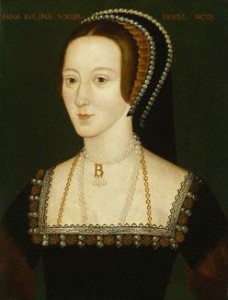
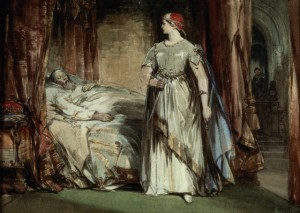
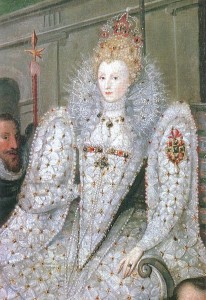
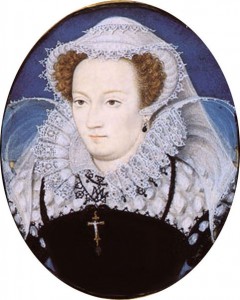
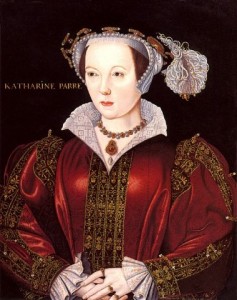
















Such great stuff! – I can’t wait to read the book.
That was a really interesting article. Some stereotypes still exist in some societies! Imagine in Tudor times.. a hard era to be a woman, especially an intelligent one.